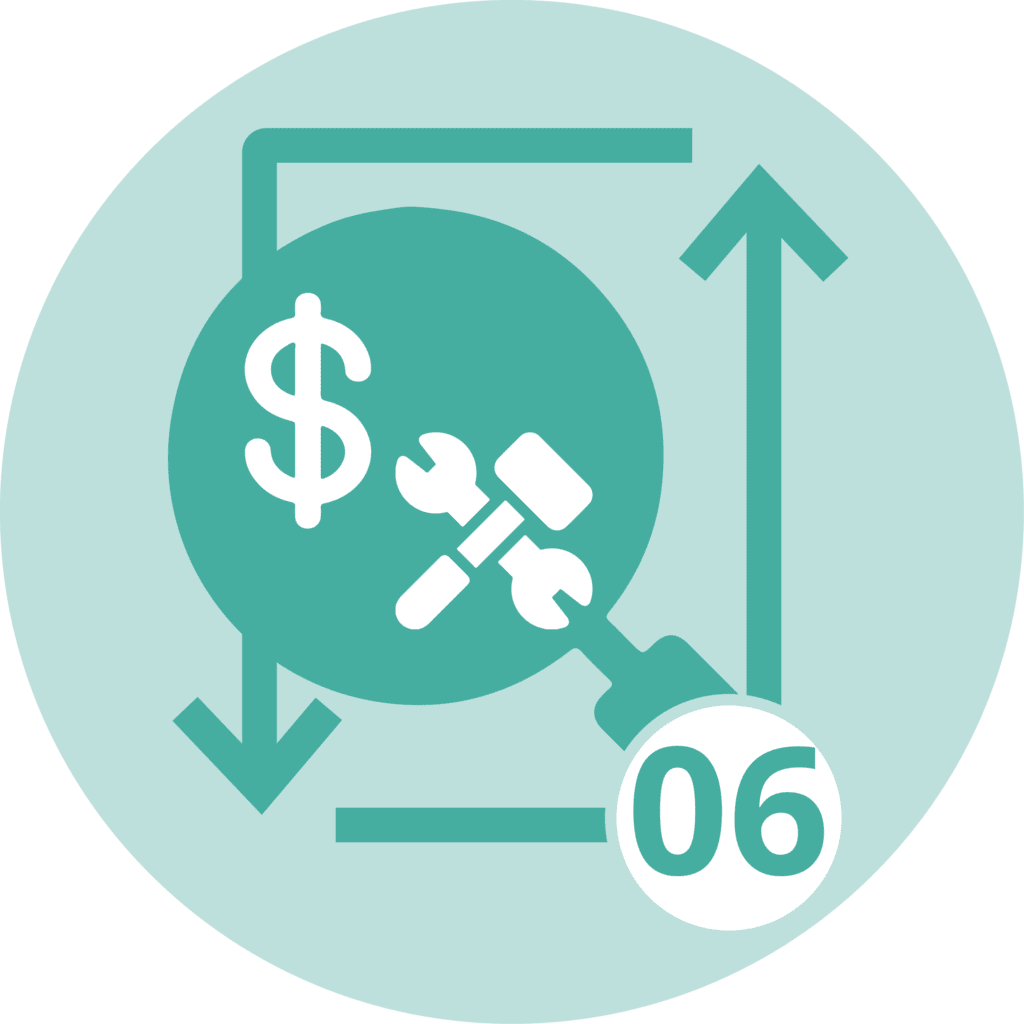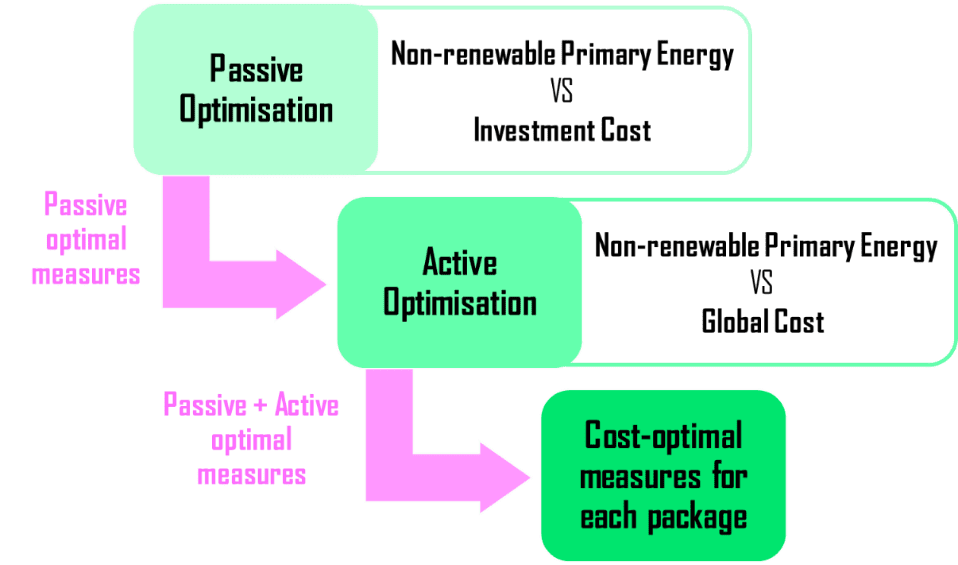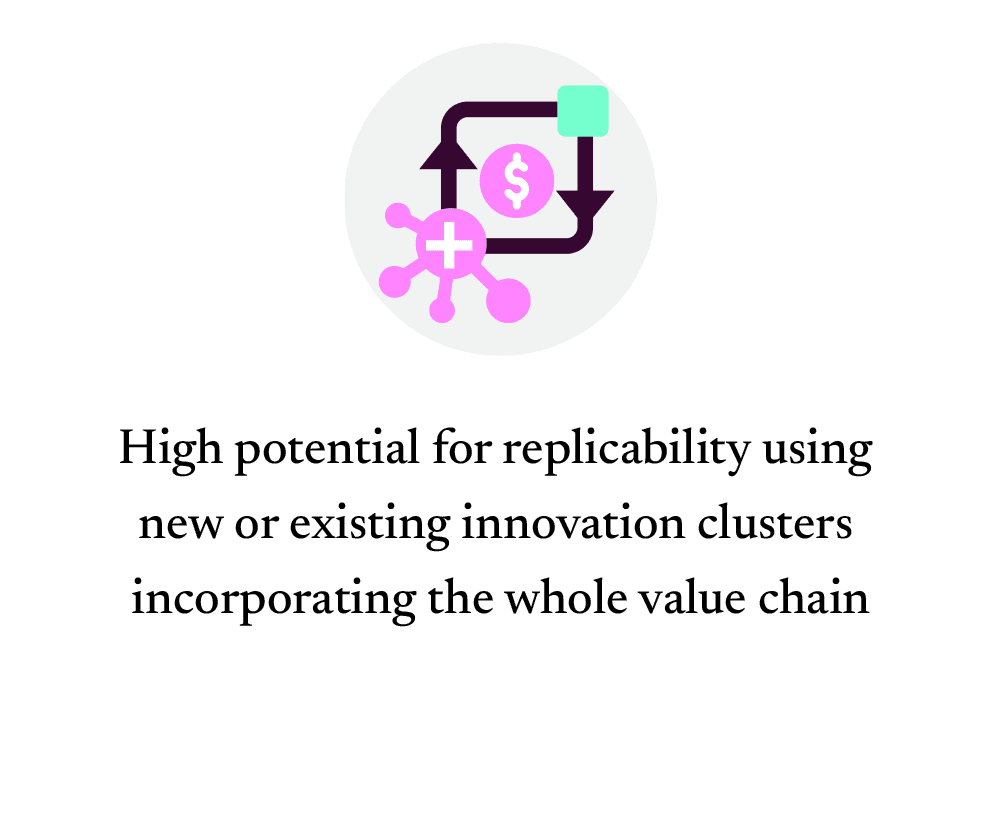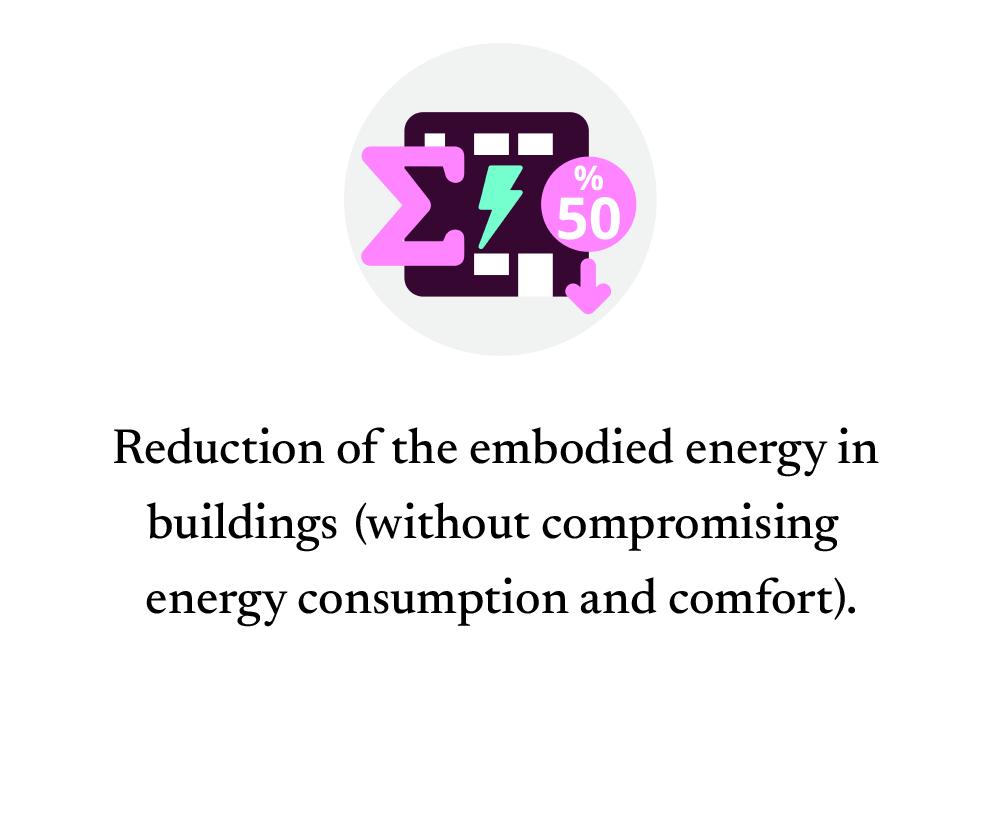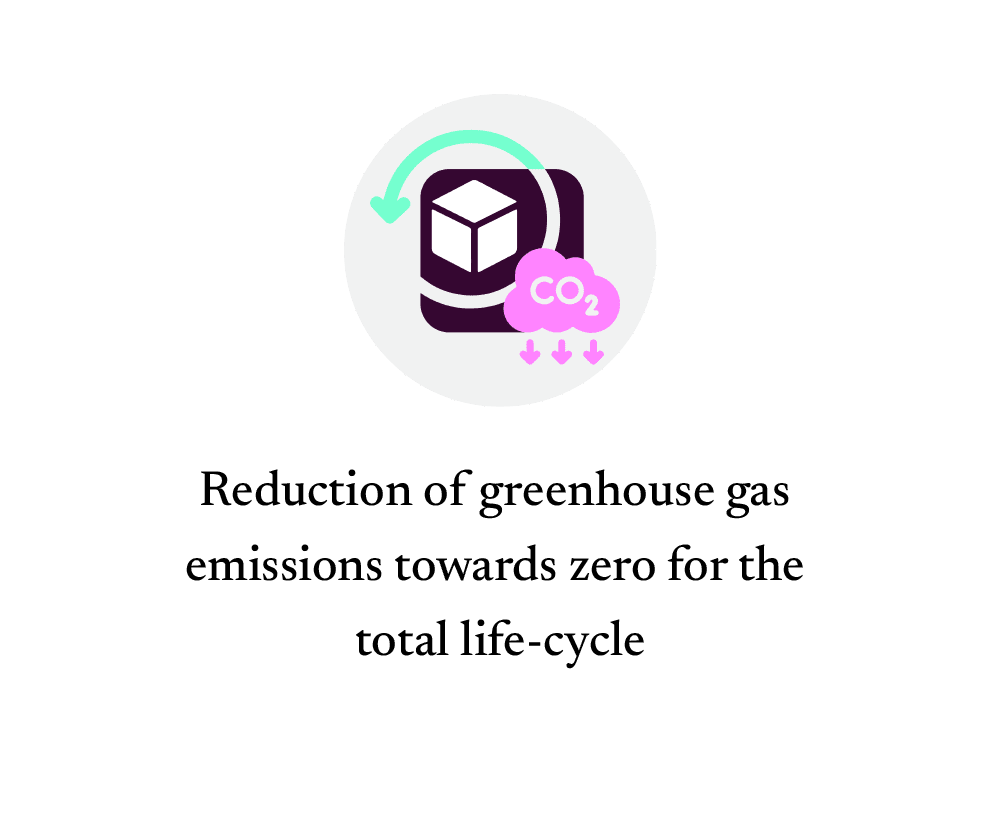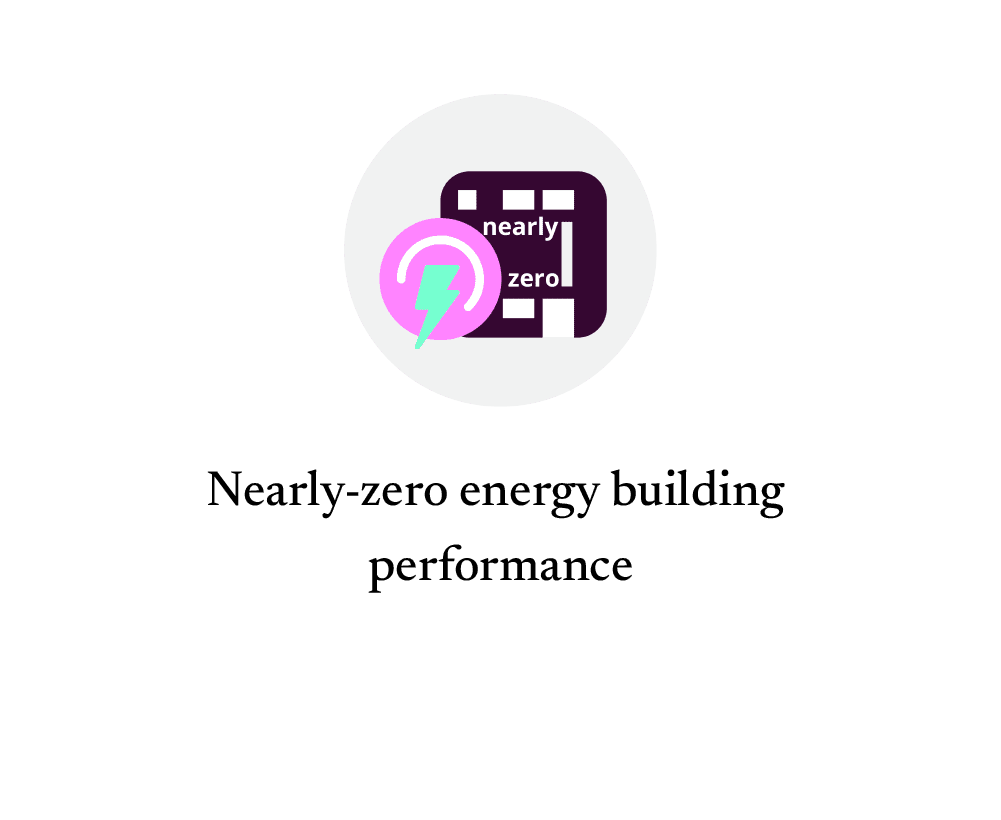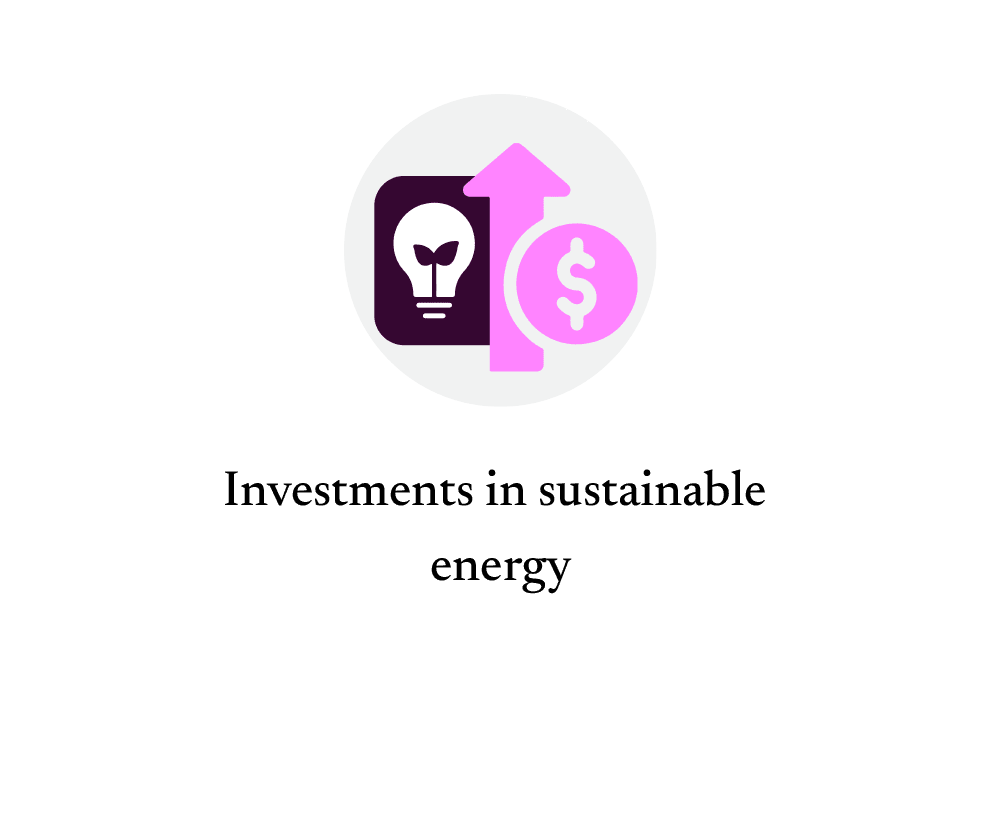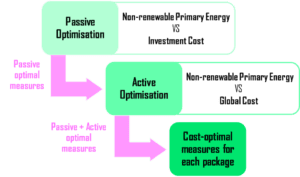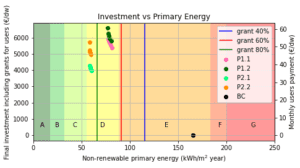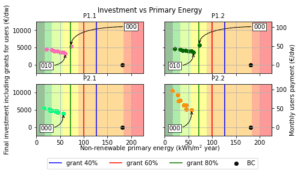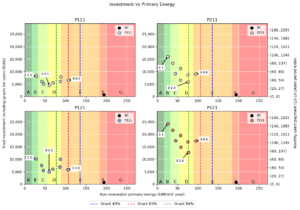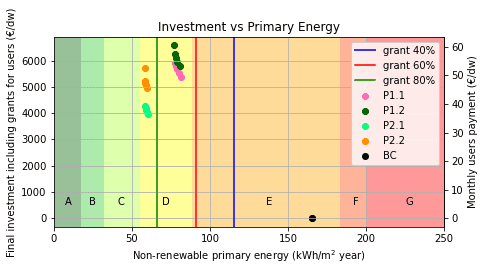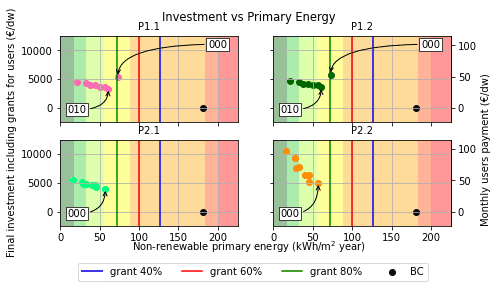A two-step methodology that aims to select the cost-optimal solutions for retrofitting of buildings in large-scale renovation process (200-300 dwellings). From a set of different potential combinations of passive elements (e.g., adding different insulation materials with different thickness and/or windows) and active elements (e.g., heat pumps / multi-split air conditioning for heating, cooling and DHW and/or photovoltaics), the methodology helps to select the most appropriate combination considering the energy performance and economic parameters. The process aims to select solutions that achieve a 50% reduction in the energy demand and/or a significant improvement in the thermal comfort conditions. A detailed economic model is part of the methodology giving as a result the following outputs: investment costs deducting grants for each owner and life cycle global costs.

